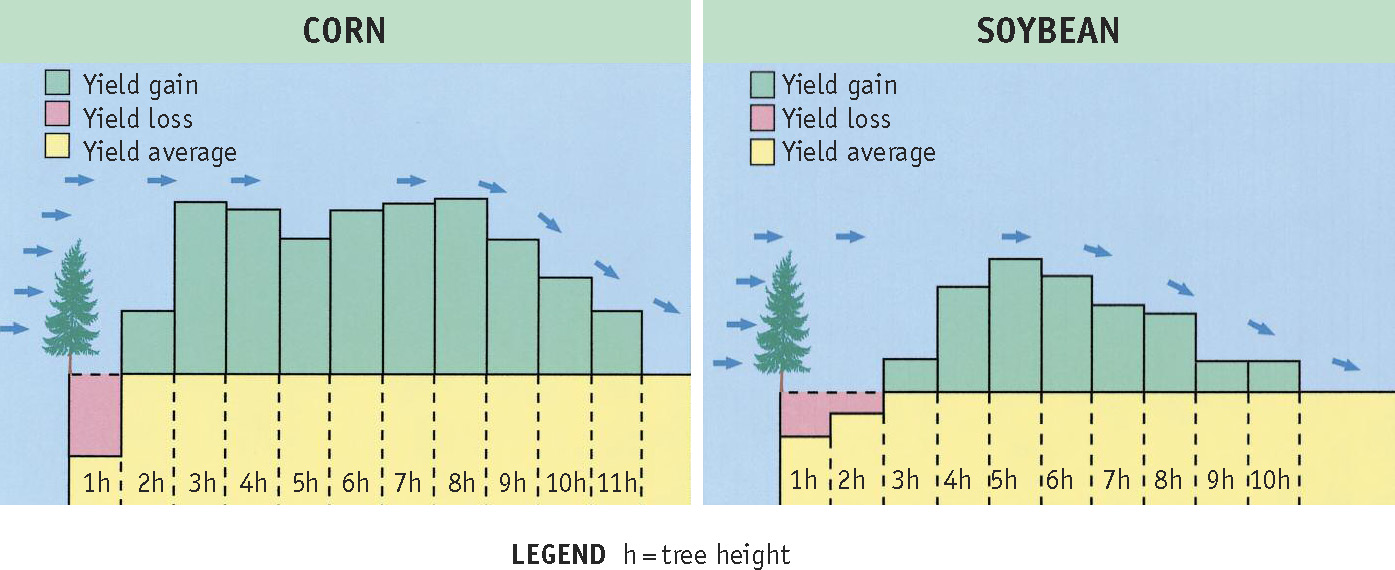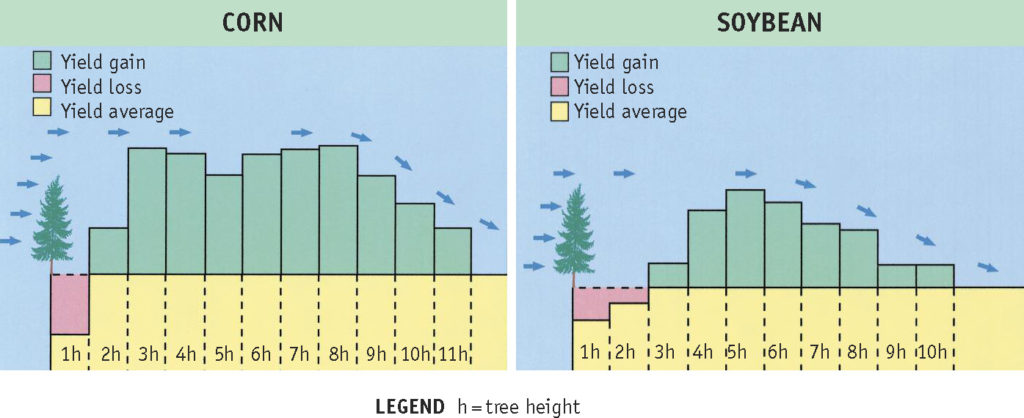Windbreaks can increase crop yields up to 15 per cent, more than making up for the amount of land they use. How? Windbreaks improve a field’s microclimate by reducing wind speeds, increasing temperatures and reducing the amount of moisture loss.
Have you considered planting a windbreak? Windbreaks can also:
- reduce soil erosion
- decrease odour and spray drift
- offer alternative income options
- save you up to 30 per cent in heating and energy costs
- shelter livestock from the wind and sun

What are the costs associated with planting windbreaks?
There are costs when planting a windbreak, such as site preparation, purchasing the trees and planting. Some conservation authorities in Ontario have cost-share programs that can help you with these costs. Contact your local conservation authority to see how they can help you plan and plant a windbreak.
What type of windbreak should you plant?
The type of windbreak you plant and how you plant it depends on the purpose for the windbreak.
- One to three rows of trees are most often planted to protect field crops from the wind and to reduce soil erosion. Multiple row windbreaks often include at least one row of conifers.
- Think about planting at least one row of hardwood trees for future alternative income sources, such as wood for fence posts, fuel and lumber.
- Plant a shelterbelt (more than three rows of trees) around your home and farm buildings to save on energy costs.
- Plant a conifer windbreak to provide livestock with wind and sun protection.
- Windbreaks deflect odours upward if properly situated to the barn.
- The taller the windbreak, the greater the area it protects. Consider the maximum height of the tree species you choose and determine if it will provide you with the protection you need.
- Keep in mind the crops that you plan to plant beside the windbreak, and the winter hardiness and typical lifespan of the selected tree species.
- Some trees may be better suited for areas with tile drains than others, an important, and potentially money-saving, consideration.
The type of soil of your land and the region of the province you’re in will also affect the type of trees you can plant. Trees can thrive and provide maximum protection when they’re matched with the right soils. Visit the Ministry of the Environment and Climate Change’s Tree Atlas to determine the best trees for your situation.
Need help?
For help with planning and planting a windbreak, contact your local conservation authority. They may be able to visit your planned windbreak site and help you with your planting plan, site preparation, choices of tree species, and appropriate spacing and planting, as well as windbreak maintenance.
OMAFRA has many resources to help you with windbreak planning. Visit our website to watch four windbreak videos on planning, planting, maintenance and farmer windbreak success stories. Our free Best Management Practices book, “Establishing Tree Cover,” provides a step-by-step guide for planning and planting a windbreak and includes maintenance tips. Contact OMAFRA’s Agricultural Information Contact Centre at 1-877-424-1300 or ag.info.omafra@ontario.ca for more information.
